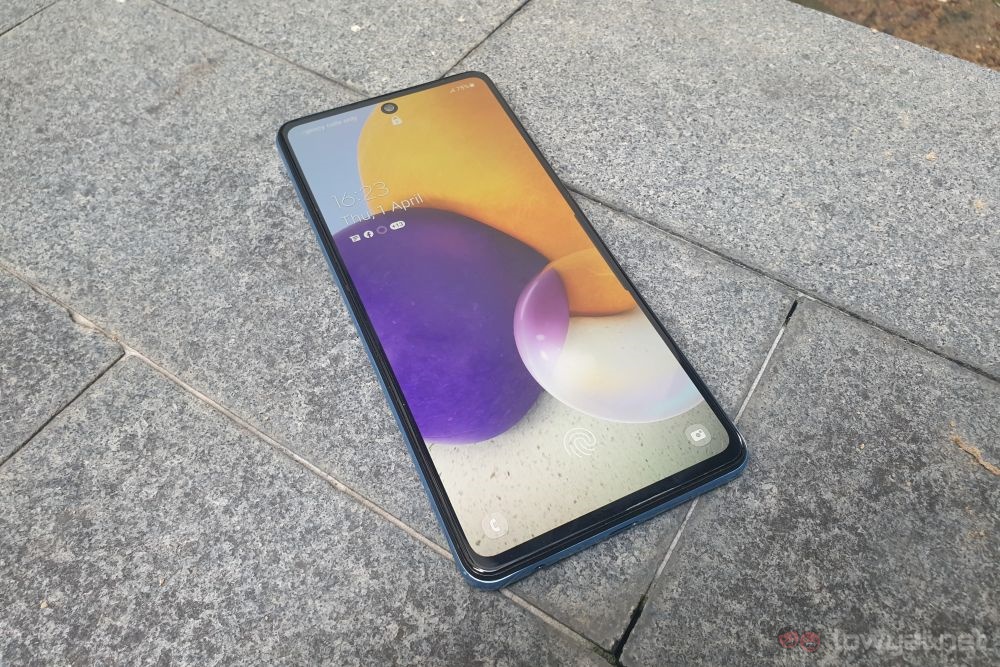Last week, Samsung announced the Galaxy A72 with a price tag of RM1899. It’s a refresh that we expected to happen, replacing last year’s A71. Like its predecessor, it aims to blur the lines between mid-range and high-end phones, and then some. And with a new iteration, its price also edges closer to the RM2000 mark.
So what exactly is new with the A72? Is there something going for it that wasn’t there before? Is this something you would pick up now because of those new things? Let’s find out.
Specifications
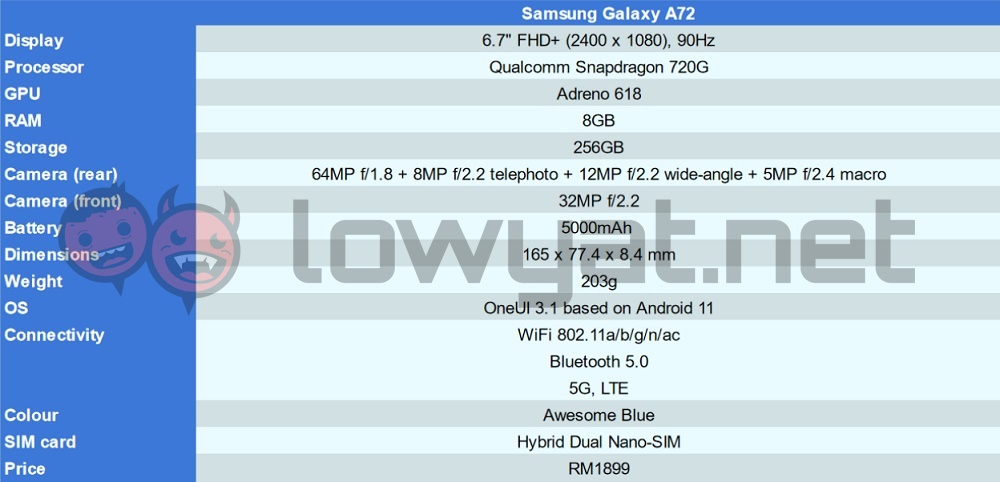
It’s both amazing and strange to think that the Samsung Galaxy A72 uses the Qualcomm Snapdragon 720G chipset, especially since its predecessor flaunted a Snapdragon 730. That said, it’s pretty safe to say that the 720G is the superior chipset in nearly every way.
Design
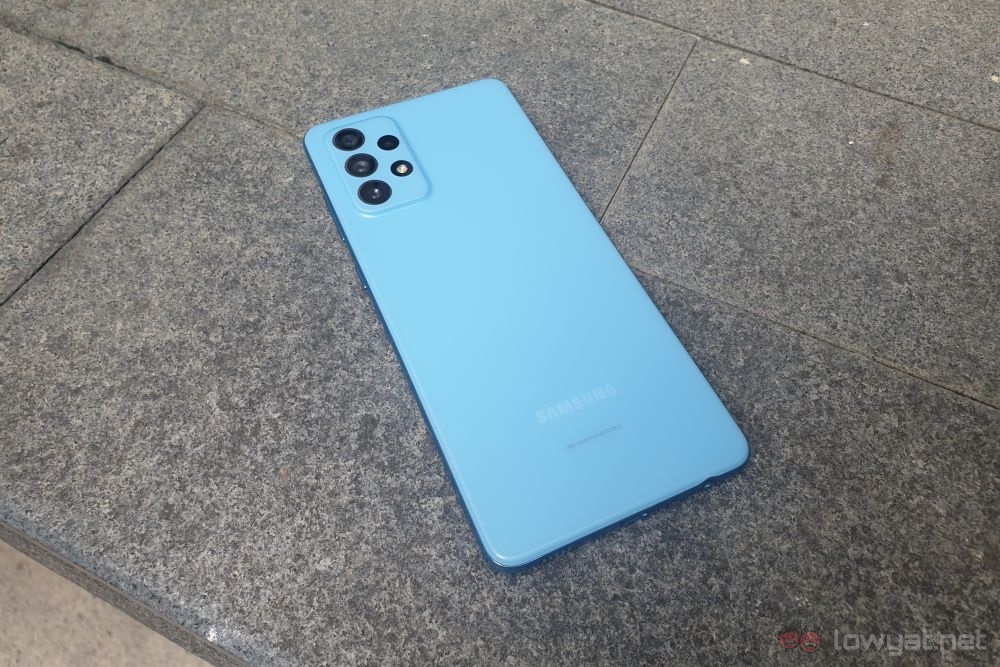
Let’s start with the part of the Samsung Galaxy A72 that sticks out the most: the backplate. As mentioned in our hands-on with the phone, the new plastic approach is a very welcome change of pace after a lot of glass backs but in all fairness, it is quite pretty. Though, Samsung has a very, shall we say, self-assured, naming convention for the design.
Some familiar bits still remain, and that’s primarily the camera island. The fact that it’s a seamless piece of plastic is also novel. But while it looks nice, it’s something that you’ll have to keep in mind while you hold it in your hand; Despite it being plastic, it’s still quite slippery, with the kind of texture that you’d expect from frosted glass.
Despite what’s found at the back, you’ll find the familiar glossy, reflective coat of paint on the sides of the phone. There’s nothing to be found on the left side, and you’ll find only the SIM tray on top. On the right, as usual, are the power button and volume rocker. At the bottom, we see the USB-C charging port, the speaker grille, and the increasingly rare 3.5mm audio jack.
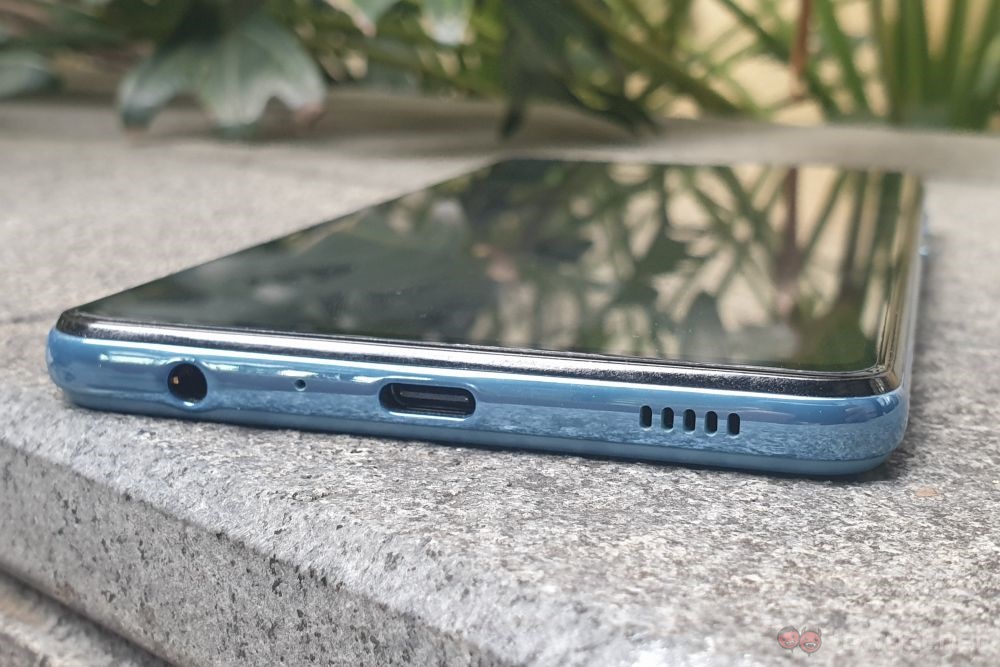
In front, there isn’t much that can be changed either, so things are still pretty similar. The only notable difference is that the punch hole cutout is noticeably smaller. The screen is a familiar 6.7-inch Full HD+ display as we saw with the preceding model. though it does have a better refresh rate, which we will get to later. The earpiece also acts as the second speaker for its stereo sound setup.
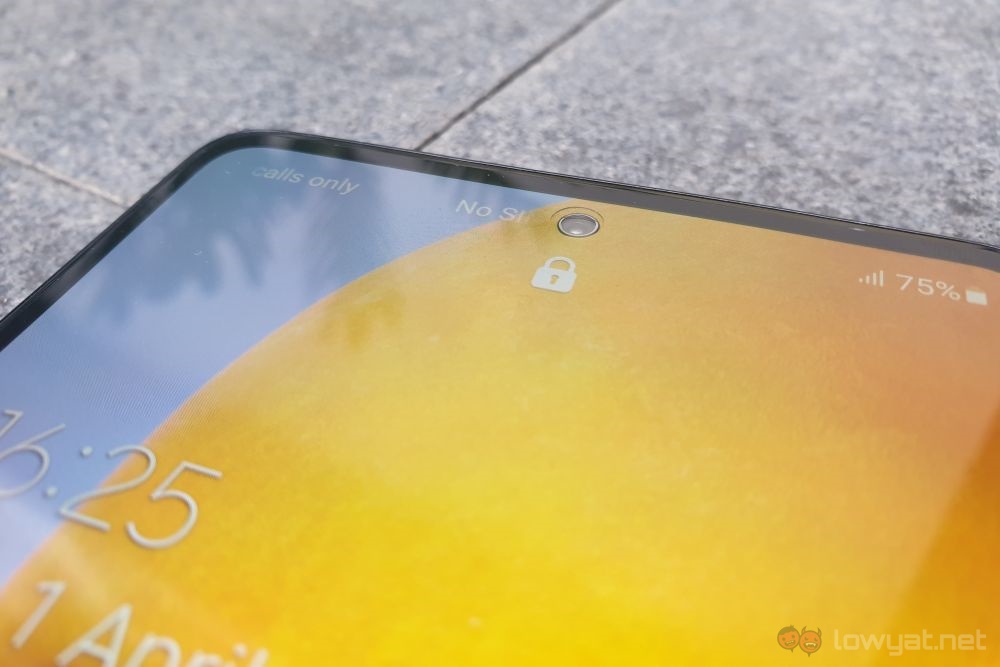
Overall, the Samsung Galaxy A72 doesn’t deviate much from the usual slate design norms. While the back may be a little unique, and is more slippery than most, it definitely doesn’t stand out in any other way in terms of looks.
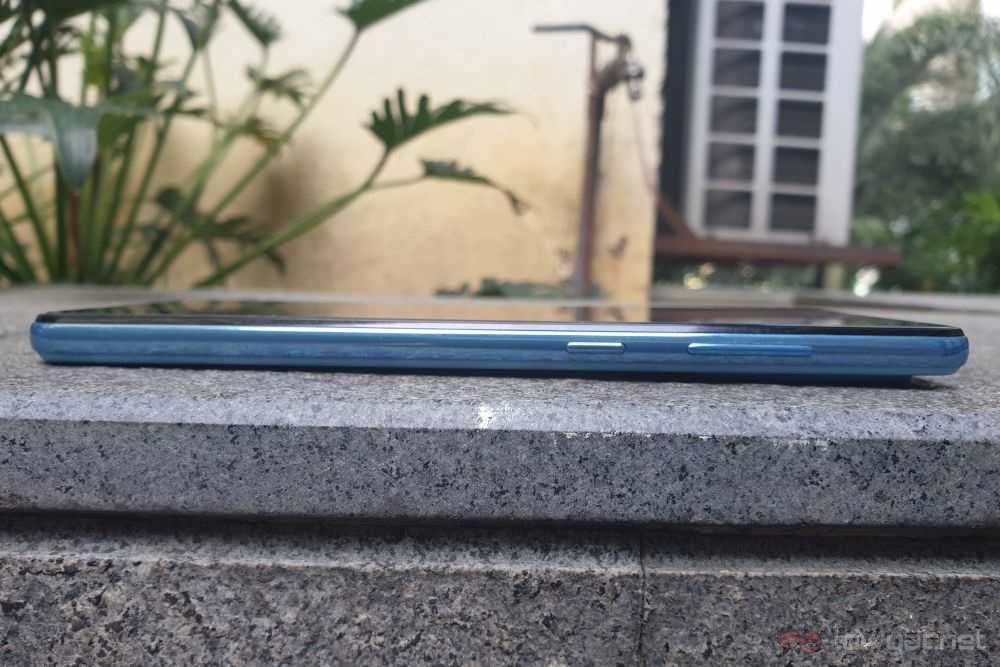
One important deviation from mid-range device norms that’s worth mentioning though, is the fact that it has an IP rating. Specifically, it has an IP67 rating, which is about the second-best rating a consumer device can get. It’s something that’s usually reserved for flagships, and probably not an element that is immediately appreciated. But since it’s there, it does mean you can take pictures during a light drizzle. Or take a call while you’re desperately trying to escape from the rain.
User Experience
Despite the prominence of the plastic back, the Samsung Galaxy A72 feels surprisingly hefty. Most of the weight is situated on the bottom half of the phone, so holding it in landscape mode might feel a tad uncomfortable. This is especially if you hold it in one hand while watching a long video. That said, holding it in portrait orientation didn’t pose too much of a problem, even for extended periods of time.
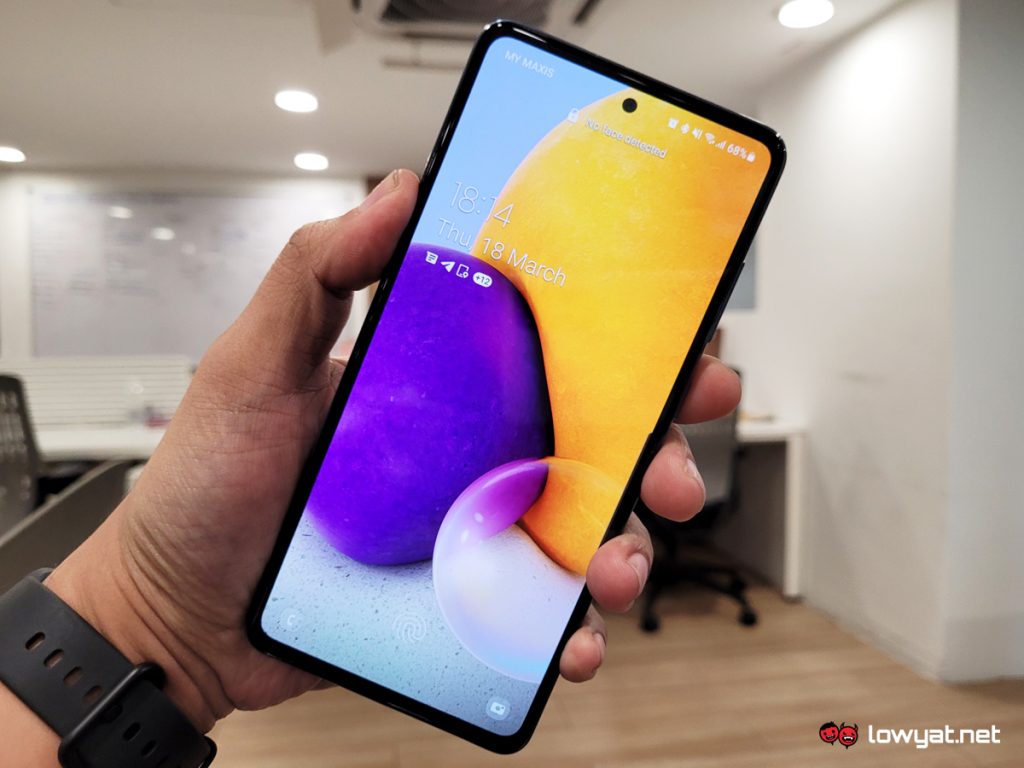
I mentioned earlier a better refresh rate on the display of the Samsung Galaxy A72, and it’s the expected upgrade from 60Hz to 90Hz. You can definitely see the difference in smoothness while you scroll through pages on your home screen, or through your favourite social media. The smaller punch hole cutout for the camera is also a lot less intrusive. As a result, you don’t see it getting in the way of your content as frequently.
The earpiece acting as a second speaker is becoming more commonplace among Samsung devices. Unfortunately, it’s not easy to balance it, being a front-facing speaker, with the main one that fires off from the bottom of the phone. The result is the familiar situation of one speaker, or side, being louder than the other.
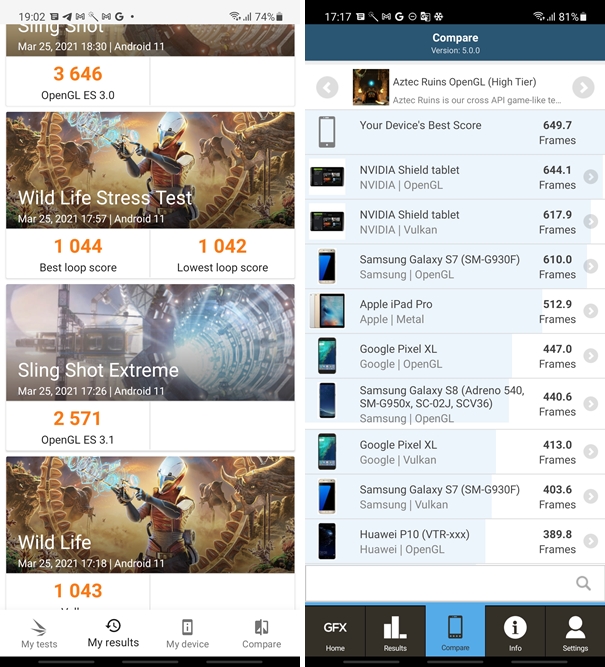
And then there’s its performance. With a Qualcomm Snapdragon 720G chipset and 8GB of RAM, the phone does perform most tasks well, although you’ll probably only run into some issues when you play games. And while you don’t get slowdowns, there’s the occasional micro stutter, usually just before things get really hectic on screen.
Battery life is pretty impressive with normal use, but not so when you intentionally aim to drain it. I say this simply because with a moderate day’s use, I usually get home with 50% of the phone’s battery charge left. And it only drops to about 35% or 40% by the time I go to bed. While it means that it can last comfortably for a day, it won’t be able to make it through the first half of the next day.
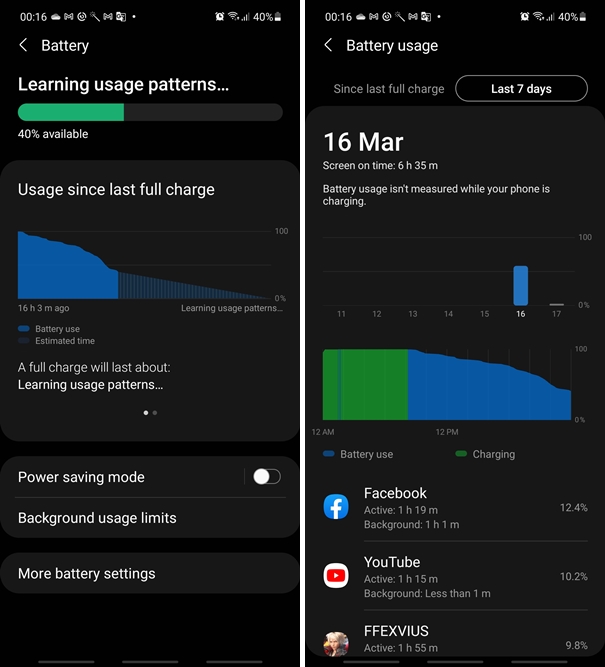
It’s the same story for our usual video loop test. The Samsung Galaxy A72 can go on a video marathon for about 18 hours and 15 minutes. Charging the 5000mAh battery from empty to full takes about an hour and 20 minutes, which isn’t too bad. And this is with the charger that came in the box.
Camera
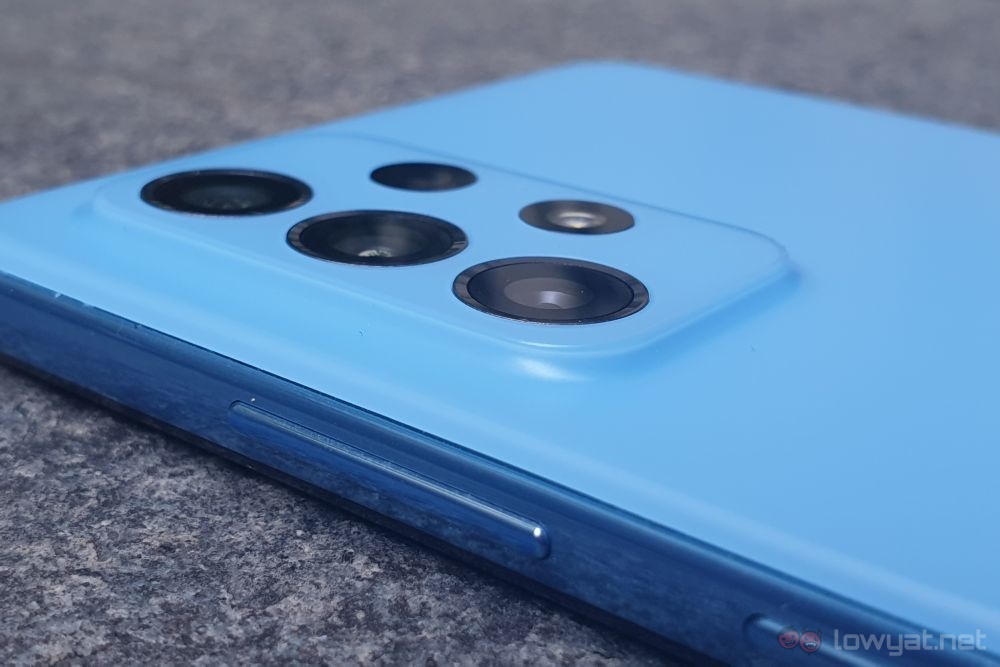
The Samsung Galaxy A72 comes with four cameras at the back, consisting of a 64MP main, 12MP ultra-wide, 5MP macro, and an 8MP telephoto shooters. A pretty standard quad-camera setup, if such a thing exists.
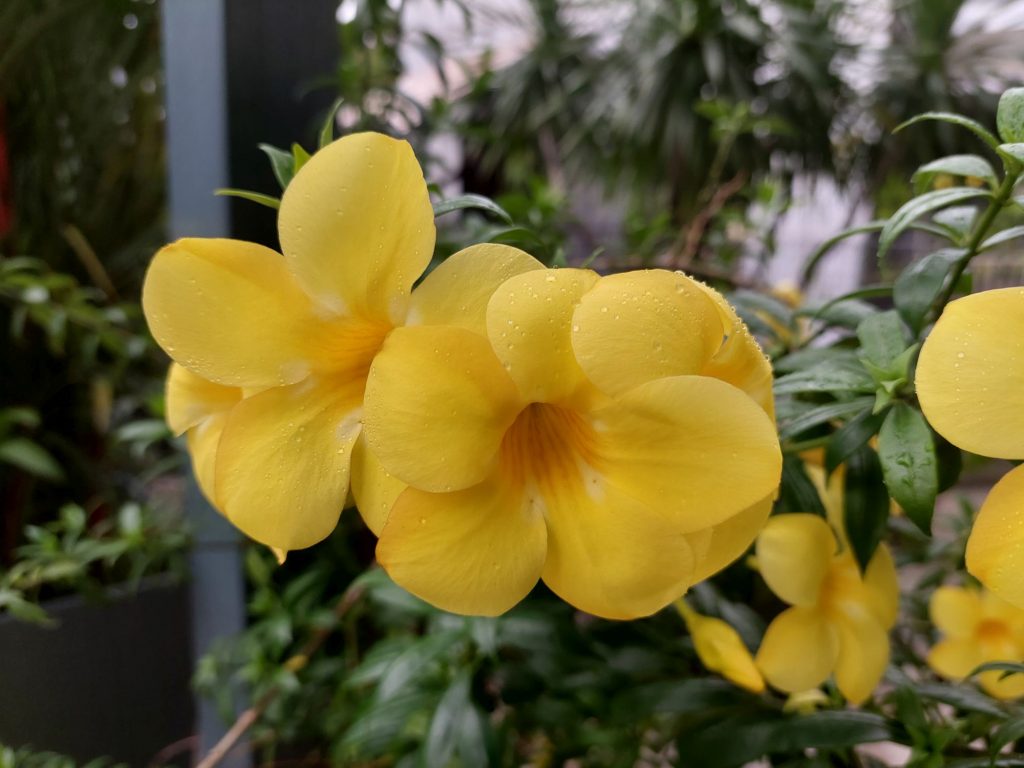
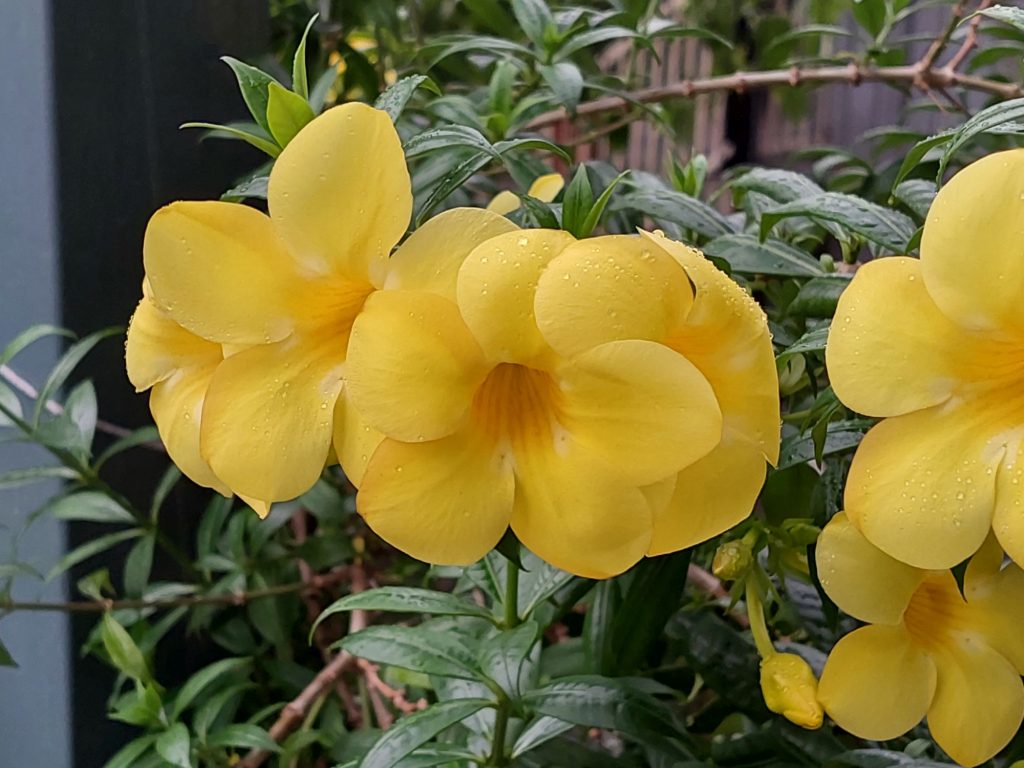
But as is common with such setups, you can expect the phone to need a second or two to adjust whenever it switches from using one camera to the next. This is most apparent when you go from the main shooter to the telephoto lens. When switching to the telephoto shooter, the final image immediately swings towards the cool side of things, with nearly everything turning blue. Auto white balance kicks in a second or so as mentioned.
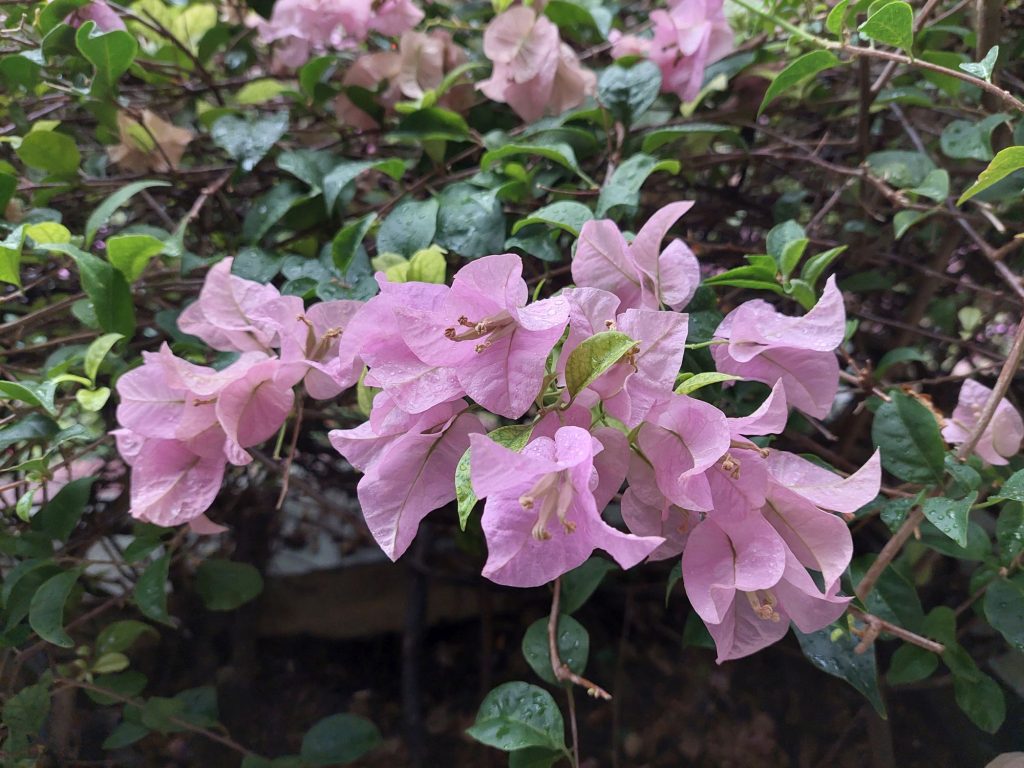
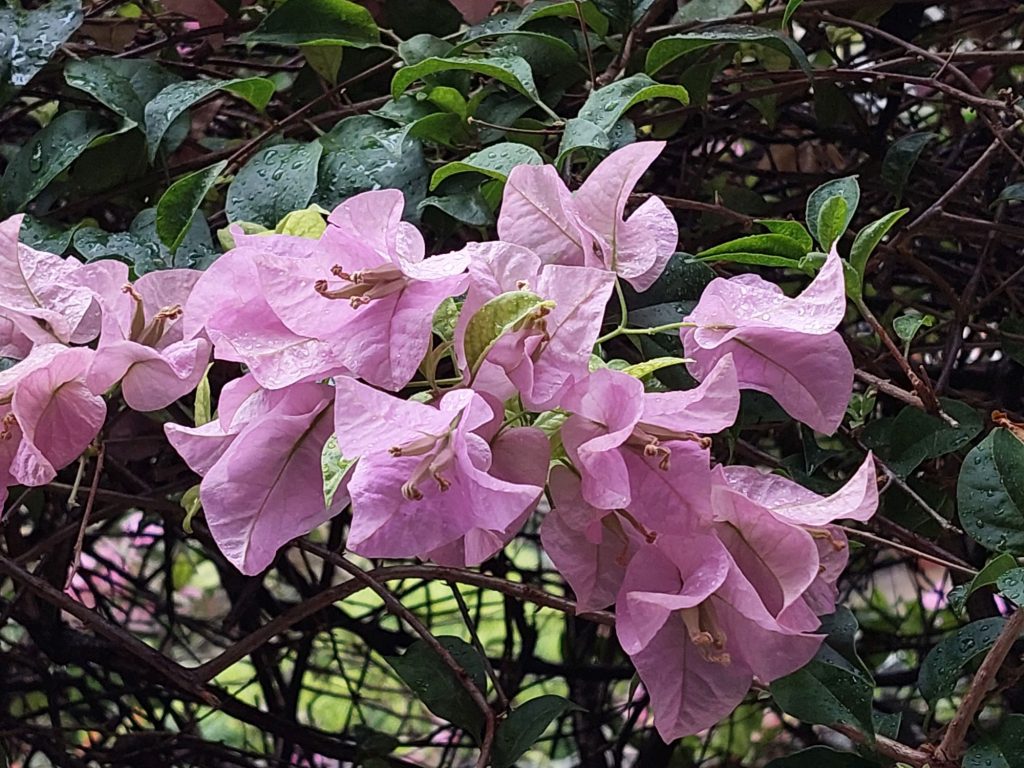
As for the other cameras sensors themselves, the colours lean heavier towards the warmer side of things, even if just slightly. And in most situations, the auto white balance tends to go try to keep the ambient lighting rather than being strict to turning white things white like the older Samsung flagships did.
Sample Images
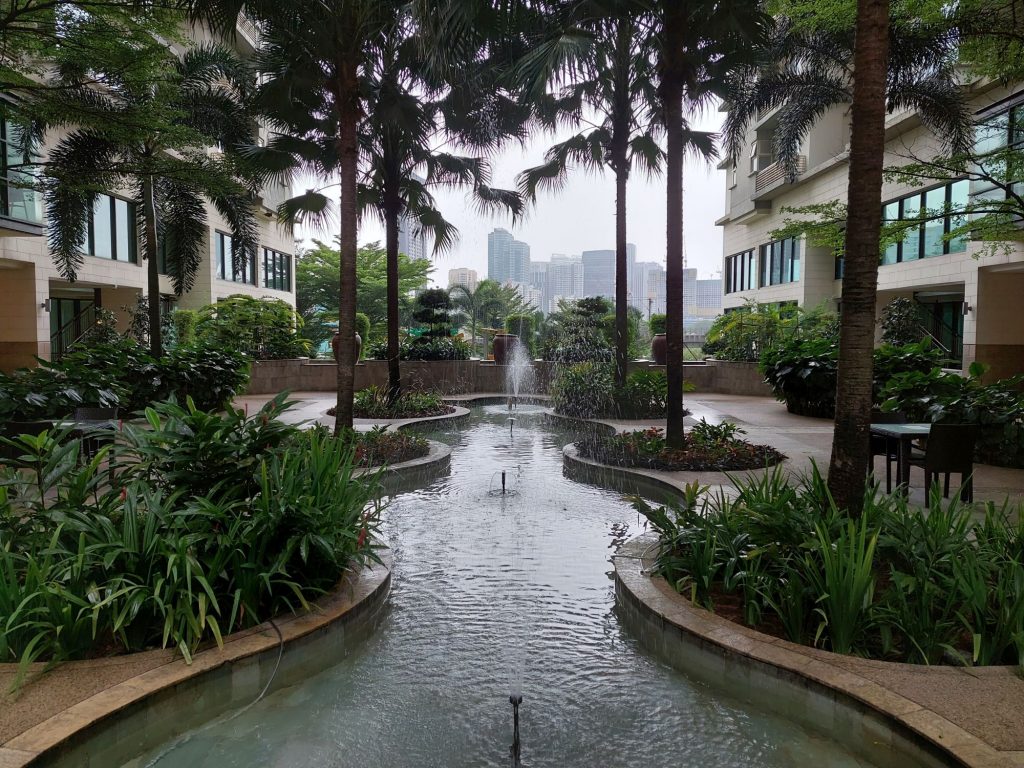
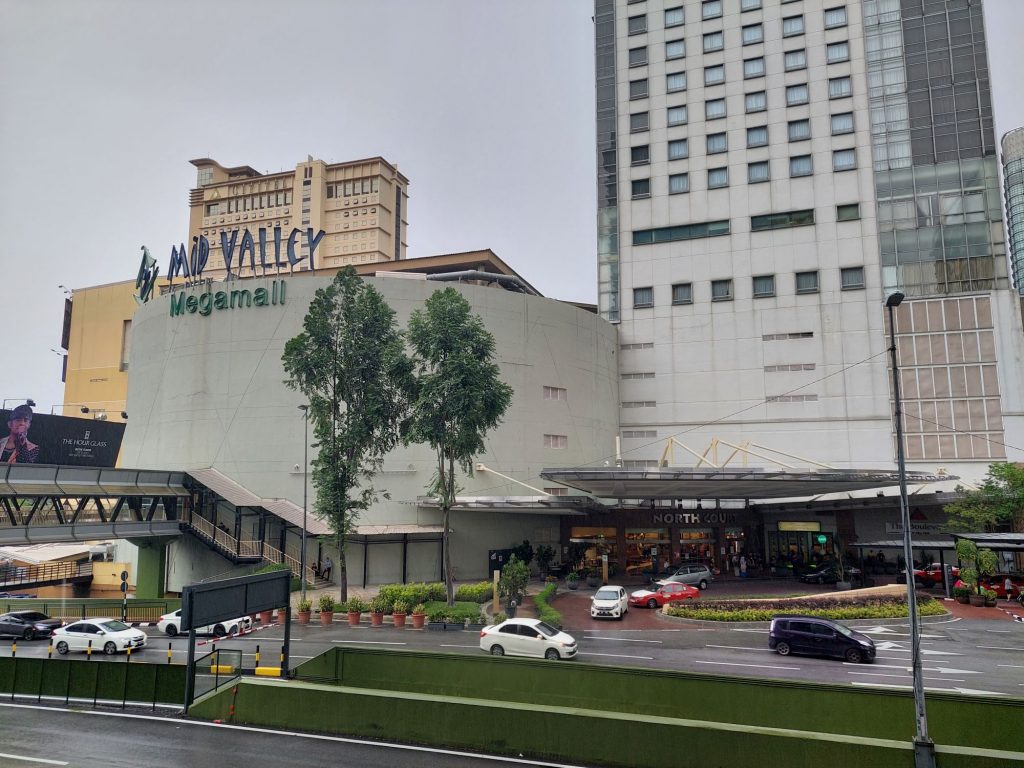
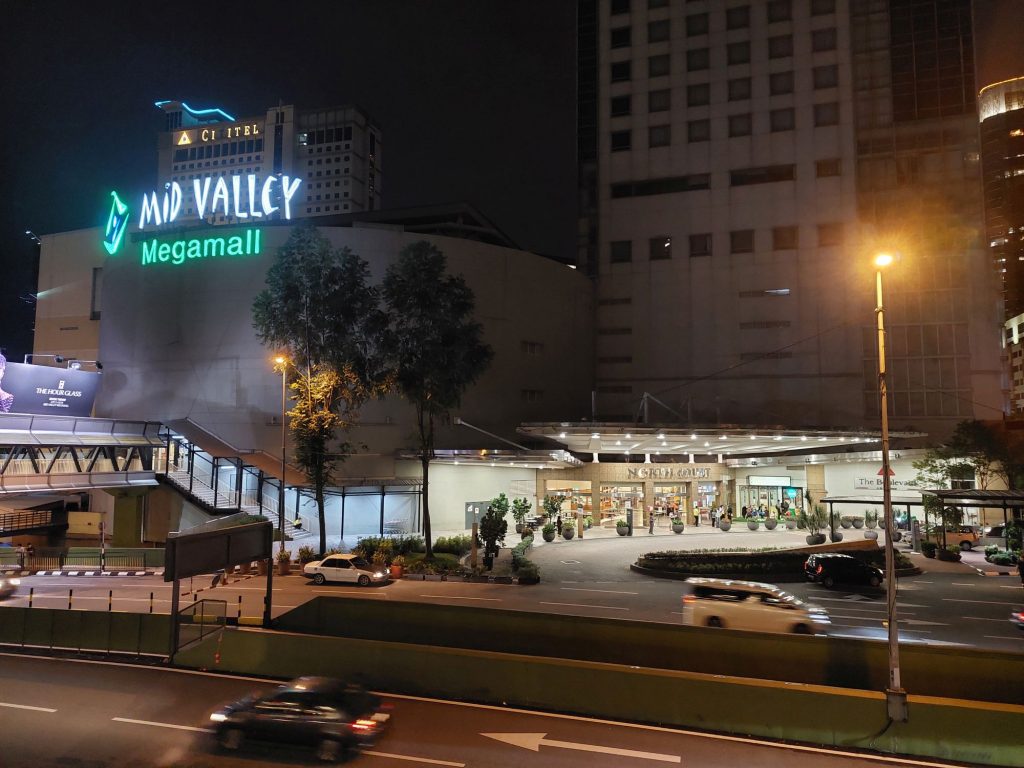
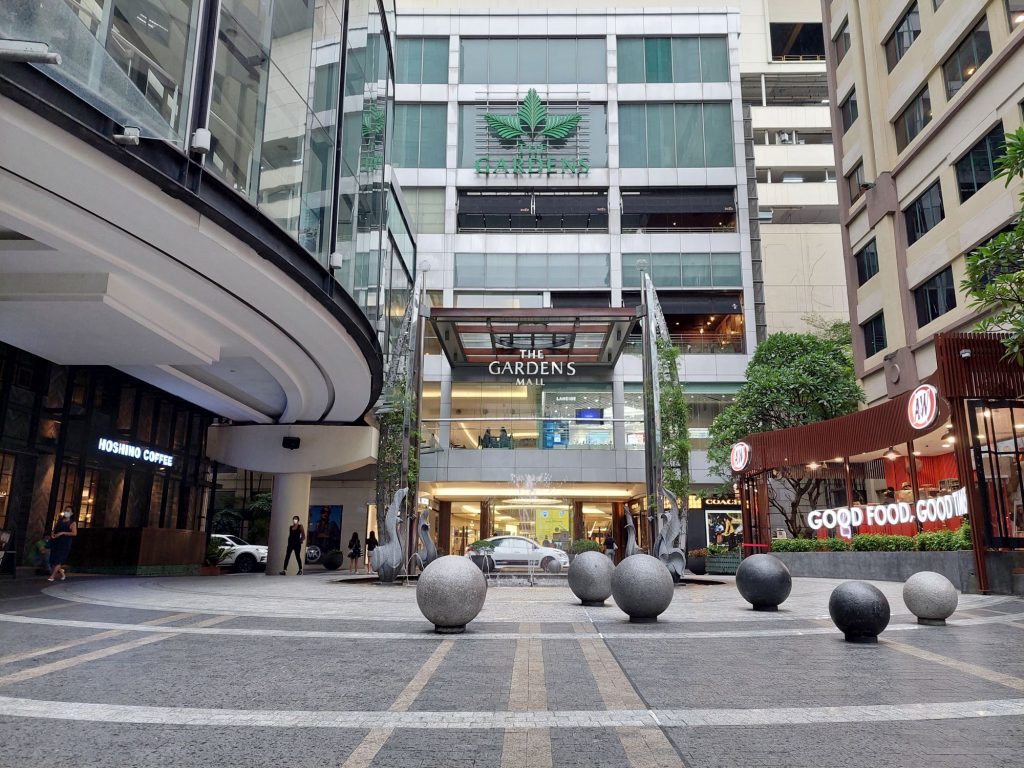
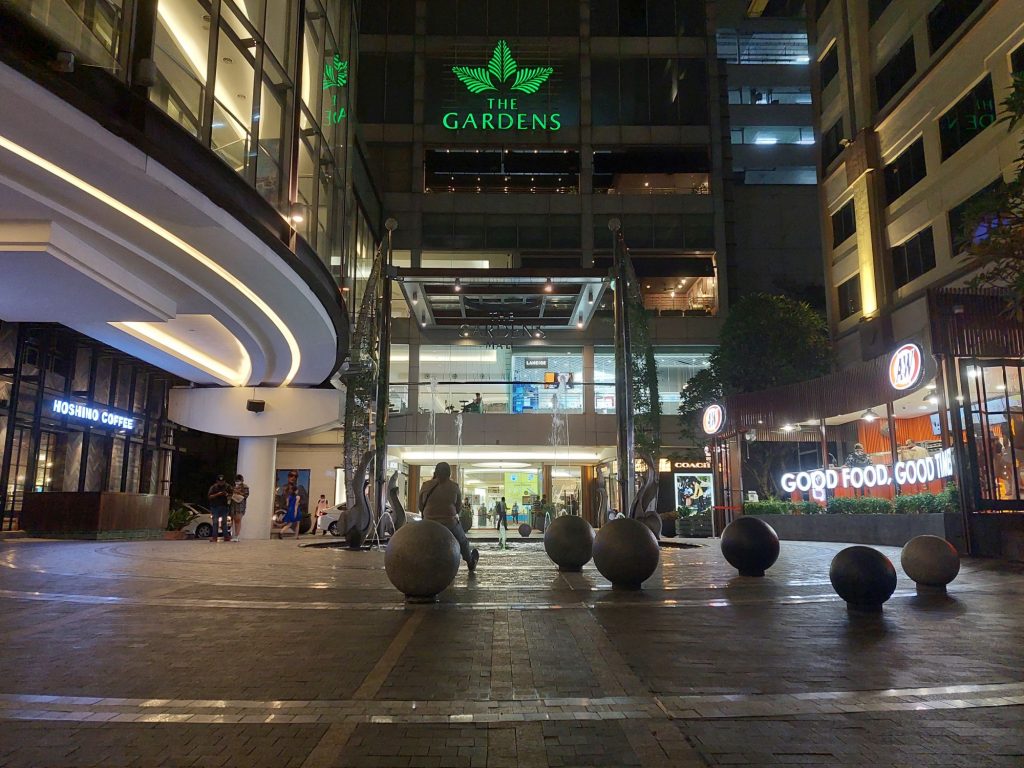
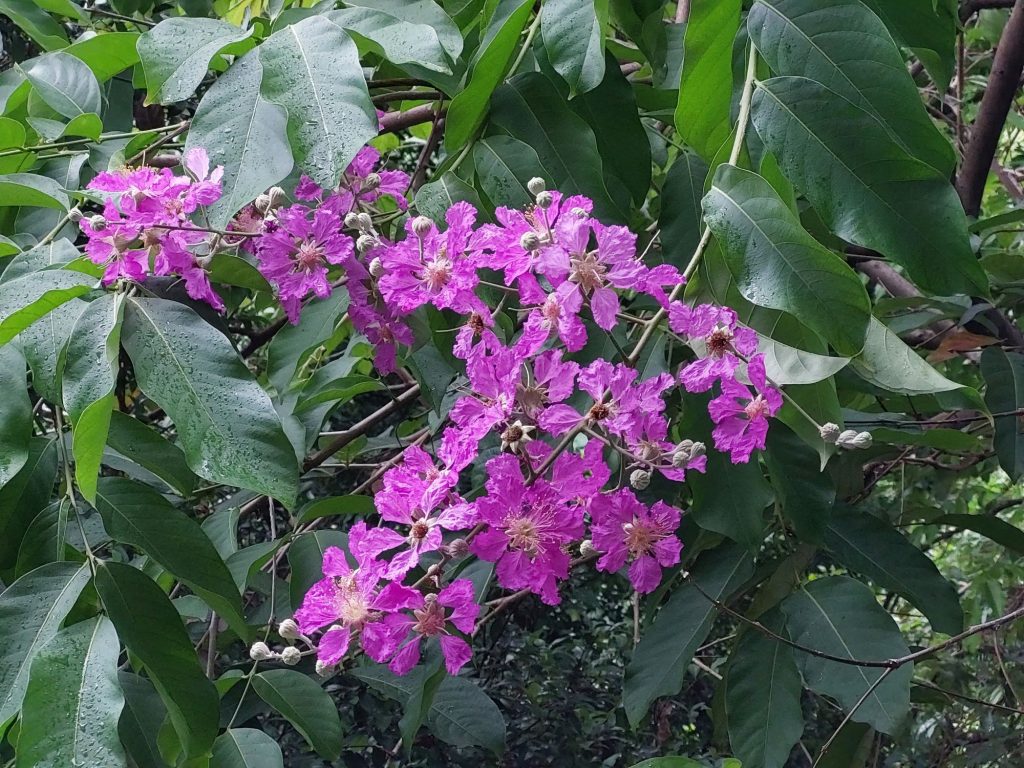
Competition
At RM1899, there is undoubtedly stiff competition for the Samsung Galaxy A72. That said, though there are a few phones in the market that will be sporting the Qualcomm Snapdragon 720G chipset, they are not yet available at the time of writing.
OPPO Reno5
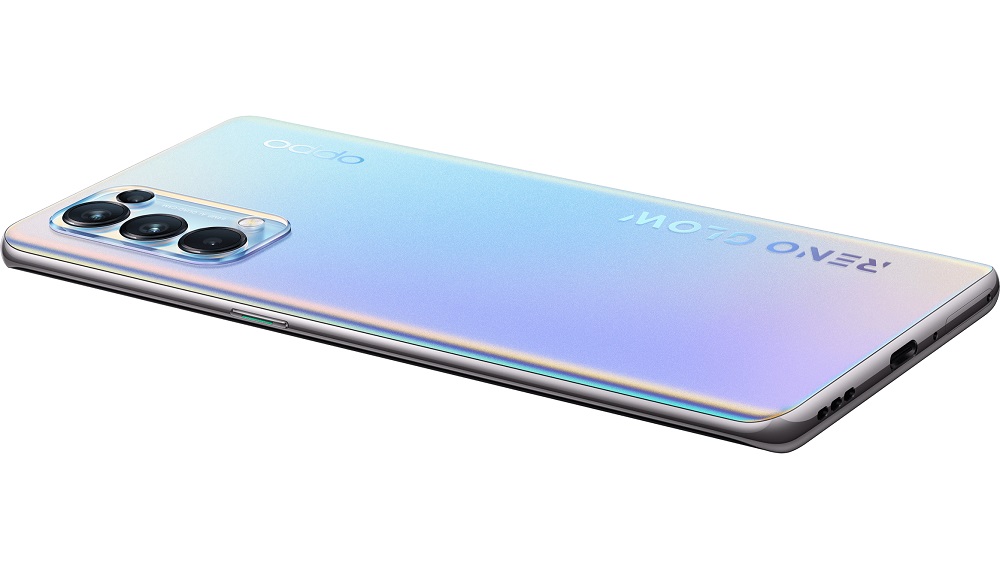
Starting with the ones that are of similar price, we have the OPPO Reno5. It also has 90Hz refresh rate and Full HD+ resolution, but the display itself is a little smaller at 6.43 inches. It runs a Qualcomm Snapdragon 765G chipset inside, with 8GB RAM and 128GB of storage space.
The battery is slightly smaller too, at 4300mAh. For cameras, it also has its own quad-camera setup. This consists of 64MP main, 8MP wide-angle, 2MP macro, and 2MP monochrome cameras. The front-facing unit is a familiar 32MP shooter.
OnePlus Nord
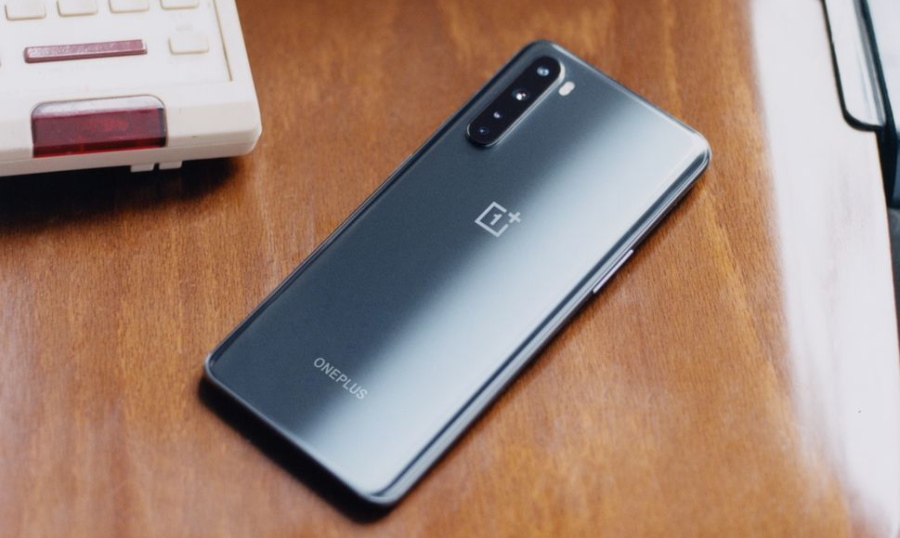
In a very similar vein, there’s the OnePlus Nord. The phone comes in at RM100 less than the A72 and with a slightly smaller 6.44-inch display. Resolution is still rated at Full HD+ with a 90Hz refresh rate, and you’ll also find the beefier Snapdragon 765G chipset inside. It also houses more RAM and a bigger storage capacity of 12GB and 256GB, respectively.
Battery capacity goes a little lower still at 4115mAh. It’s a similar story for the cameras, consisting of a 48MP main, 8MP wide-angle, 5MP depth, 2MP macro cameras. In front, it has a 32MP and 8MP dual camera setup.
realme 8 Pro

For something with a comparable Qualcomm Snapdragon 720G chipset, it’s hard not to look at the realme 8 Pro. While it’s not yet announced locally, it’s pretty likely to make its way here, judging from the company’s track record. And while there’s no price yet because of this, based on its launch price in India, it will likely be quite a bit more affordable than the others we see here.
For other items on its specs sheet, we’re looking at a 6.4-inch Full HD+ display with a 180Hz touch sampling rate rather than refresh rate, either 6GB or 8GB RAM, and 128GB of storage space. The Battery here is a 4500mAh battery. For its cameras, we’re looking at something with a 108MP main shooter accompanied by the familiar 8MP wide-angle, 2MP macro and 2MP monochrome cameras.
Conclusion
The Samsung Galaxy A72 is a cheery phone, or at least that’s the picture the company wants to paint for it. While the names of its colours can rub people the wrong way (it certainly did for me), it’s difficult to counter the point that the phone is a fine mid-range device, at least by today’s standards. The unique back is a minor plus point, but the IP67 rating is, in my opinion, the bigger and better deal.
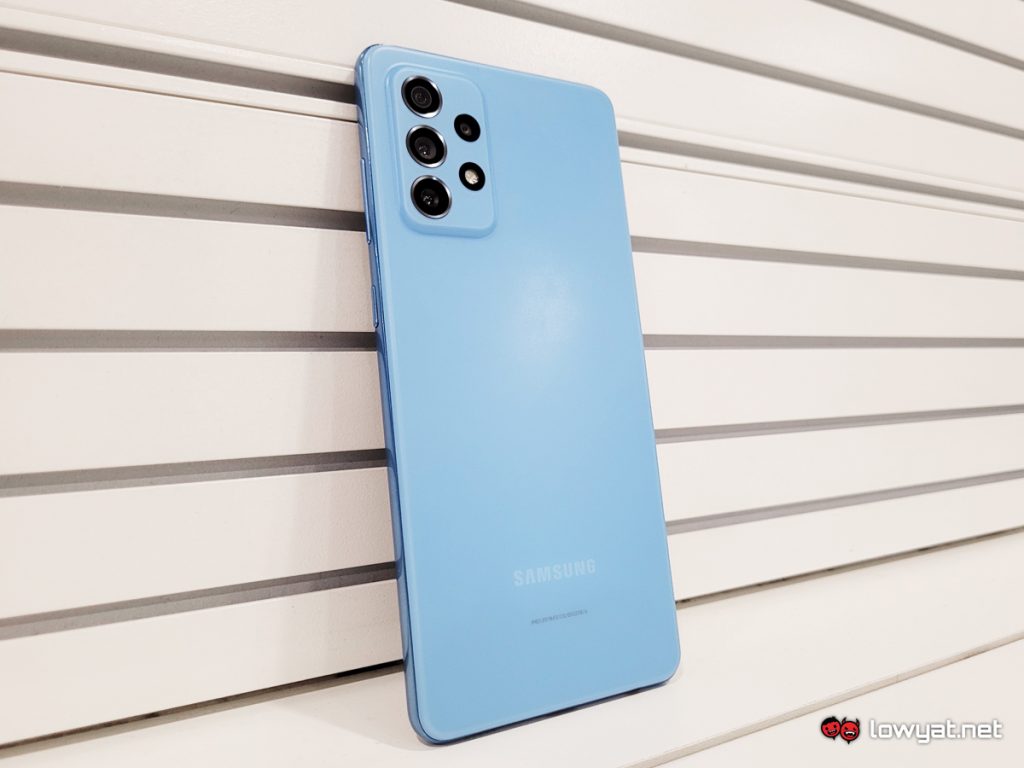
Performance-wise though, there’s nothing much to shout about. It’s a slight improvement over the preceding A71, but that’s about it. If you’re already an owner of the previous device then there’s probably not enough reason to upgrade. But if you’re looking to pick up a mid-range device with an IP rating, this is one that’s definitely worthy of consideration.
Follow us on Instagram, Facebook, Twitter or Telegram for more updates and breaking news.

